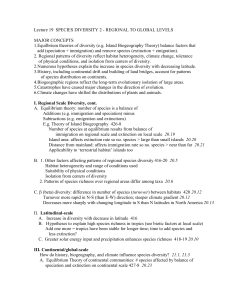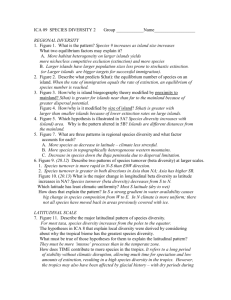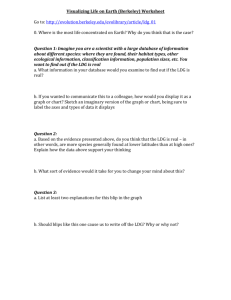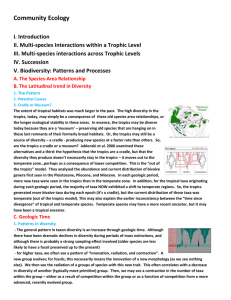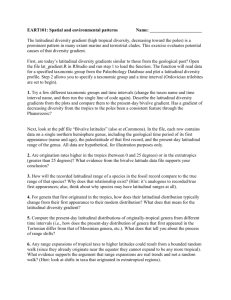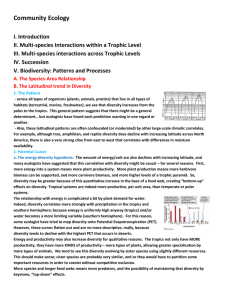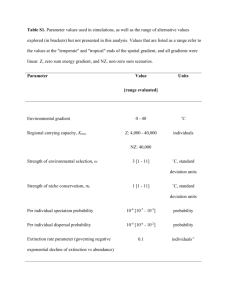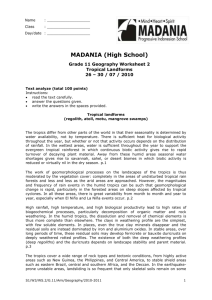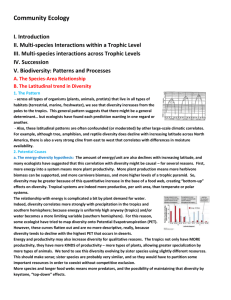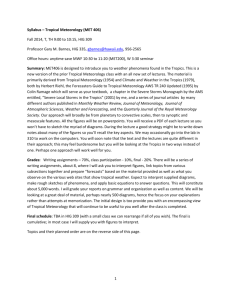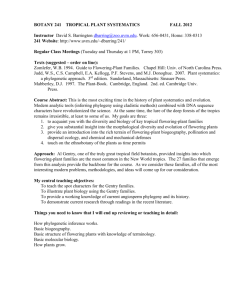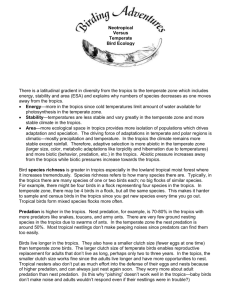File
advertisement
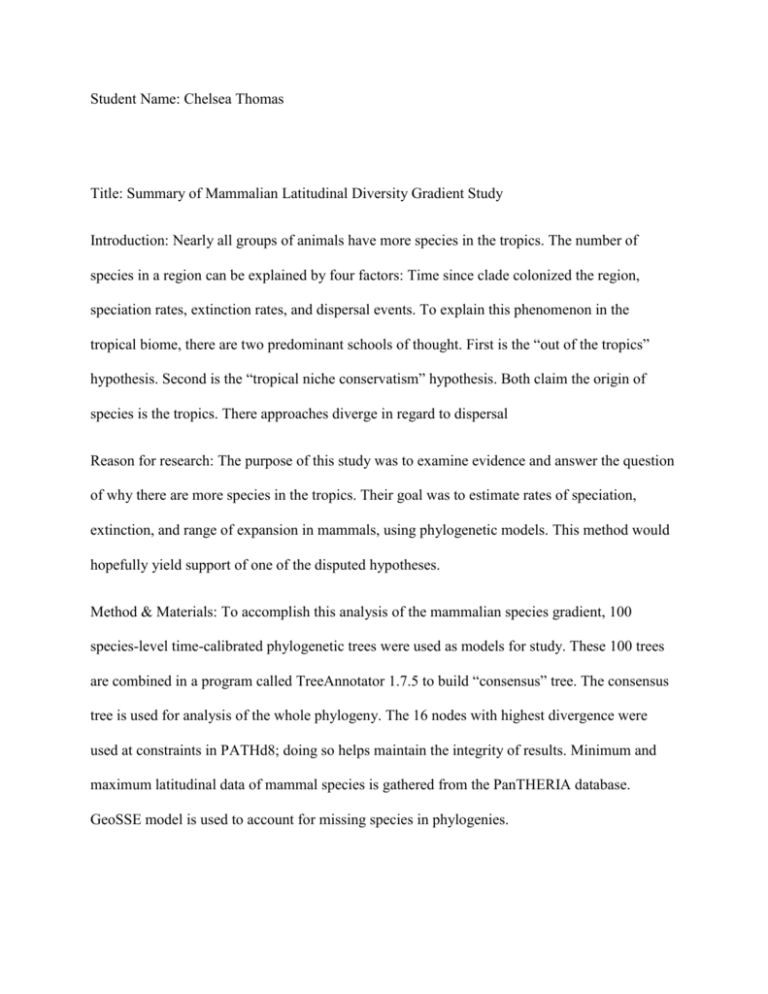
Student Name: Chelsea Thomas Title: Summary of Mammalian Latitudinal Diversity Gradient Study Introduction: Nearly all groups of animals have more species in the tropics. The number of species in a region can be explained by four factors: Time since clade colonized the region, speciation rates, extinction rates, and dispersal events. To explain this phenomenon in the tropical biome, there are two predominant schools of thought. First is the “out of the tropics” hypothesis. Second is the “tropical niche conservatism” hypothesis. Both claim the origin of species is the tropics. There approaches diverge in regard to dispersal Reason for research: The purpose of this study was to examine evidence and answer the question of why there are more species in the tropics. Their goal was to estimate rates of speciation, extinction, and range of expansion in mammals, using phylogenetic models. This method would hopefully yield support of one of the disputed hypotheses. Method & Materials: To accomplish this analysis of the mammalian species gradient, 100 species-level time-calibrated phylogenetic trees were used as models for study. These 100 trees are combined in a program called TreeAnnotator 1.7.5 to build “consensus” tree. The consensus tree is used for analysis of the whole phylogeny. The 16 nodes with highest divergence were used at constraints in PATHd8; doing so helps maintain the integrity of results. Minimum and maximum latitudinal data of mammal species is gathered from the PanTHERIA database. GeoSSE model is used to account for missing species in phylogenies. Results: Mammalian species richness peaks near the equator. 52% of all species live in the tropical biome. 23% can be found in both tropical and temperate regions. Estimated speciation rates were higher, and extinction rates lower, in the tropics. This finding means a high net diversification rate. The tropics act as both a cradle and a museum of biodiversity: Species have success originating in the tropics and disperse over temperate regions. Overall species rate remains higher in the tropics, exemplifying the biodiversity history over a geological timeframe. These findings ultimately support the “out of the tropics” hypothesis. Discussion: Inferred diversification patterns from the beginning of the study were consistent with diversity gradient models. Speciation and extinction rates distinctly vary with latitude. Differential diversification rates may be largely responsible for current mammalian diversity patterns. Over time these findings held up to potential divergences introduced by constraints for the models. There is a strong possibility of latitudinal diversity gradient being shaped during geological times: Late Cretaceous or Paleogene. This is only visible while looking at the phylogenies over a whole geological timeframe. Conclusions: Out of the tropics hypothesis is supported by the findings. The tropics have high net diversification rates now, and historically. Dispersal events can account for current mammalian latitudinal gradient. The tropics also show a biodiversity history because of low extinction rates. Limitation of this study: The models used for the study are state of the art. With their recent development relative to the study, there can be limitations and flaws associated with them, yet to be discovered. The constraints of the models used provide for a robust study, however there are Bibliography: http://www.plosbiology.org/article/info%3Adoi%2F10.1371%2Fjournal.pbio.1001775

